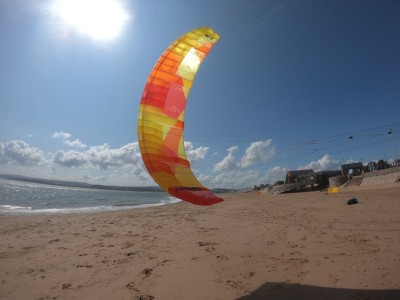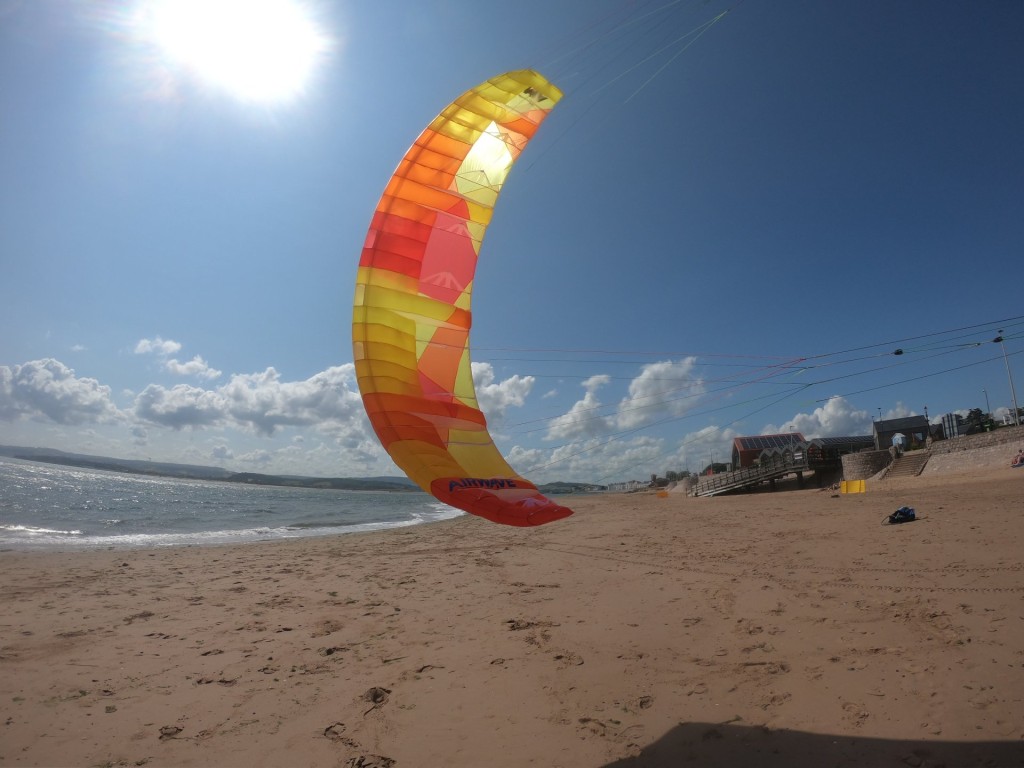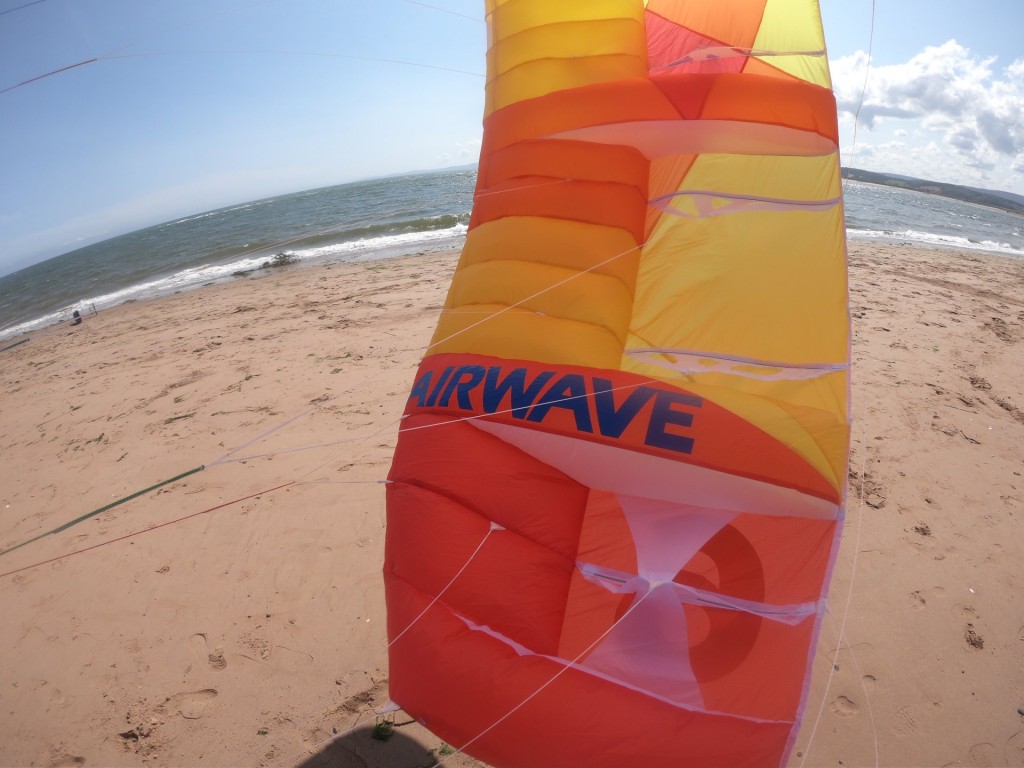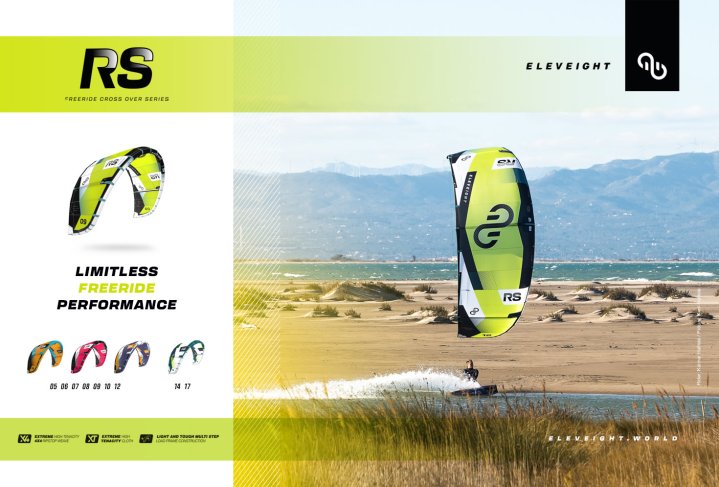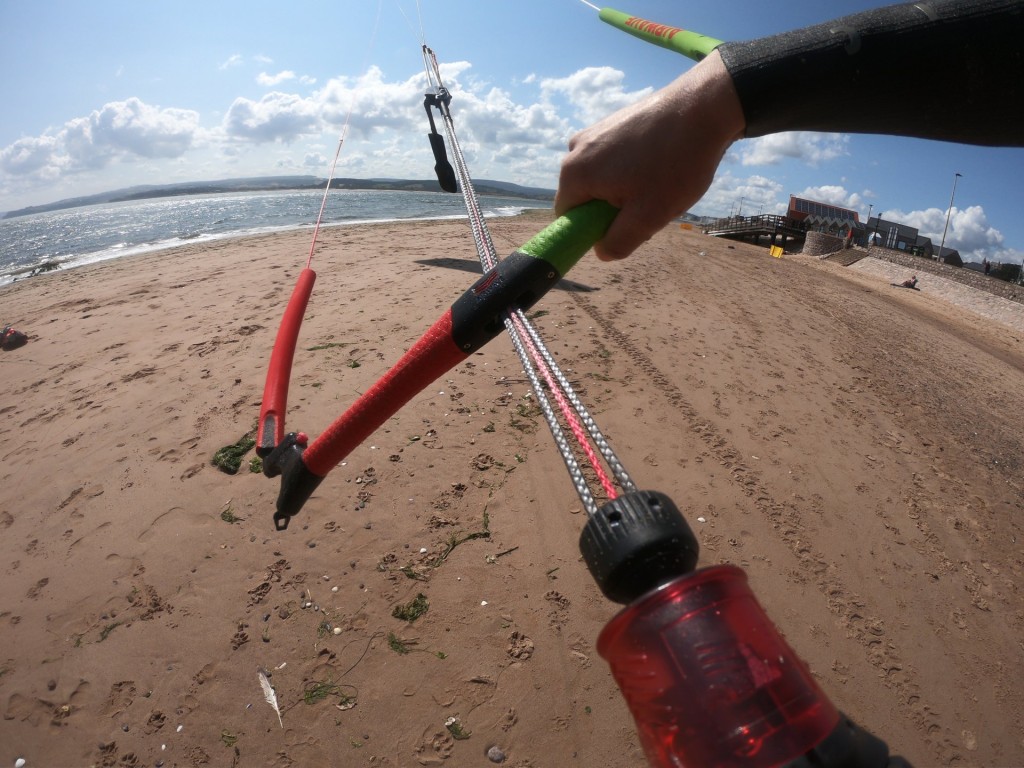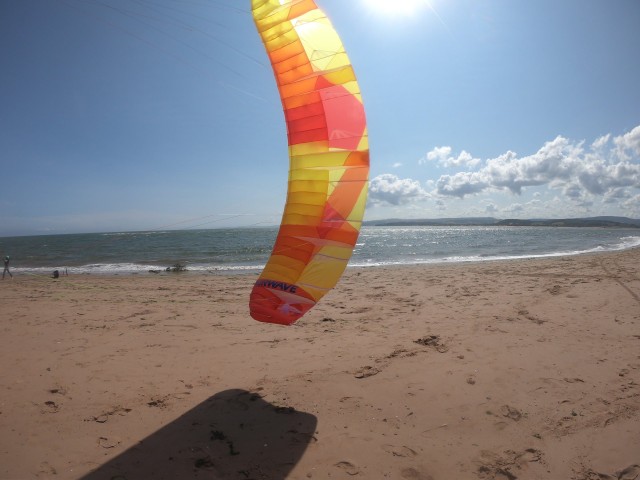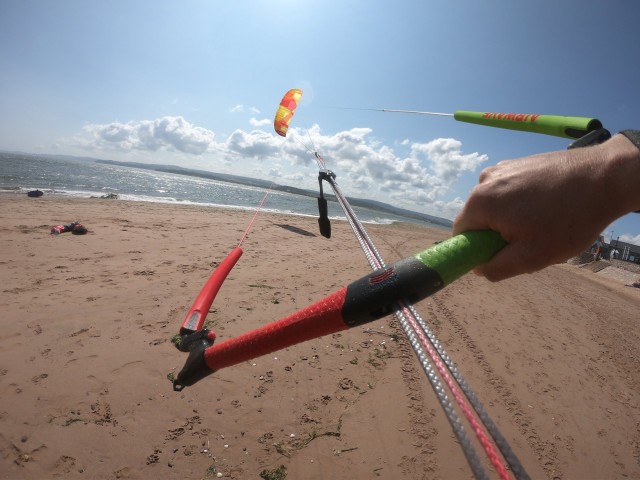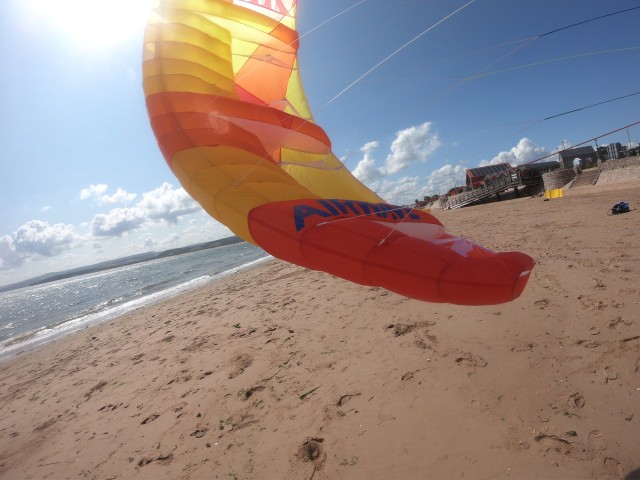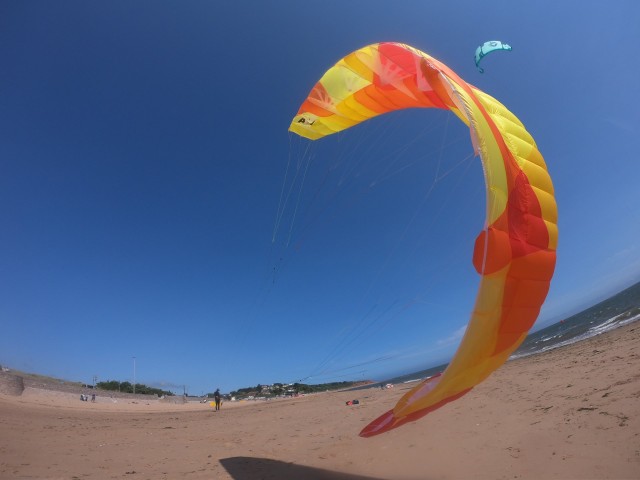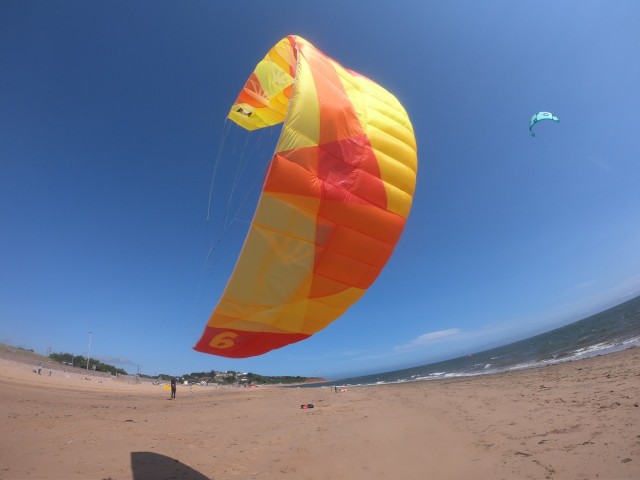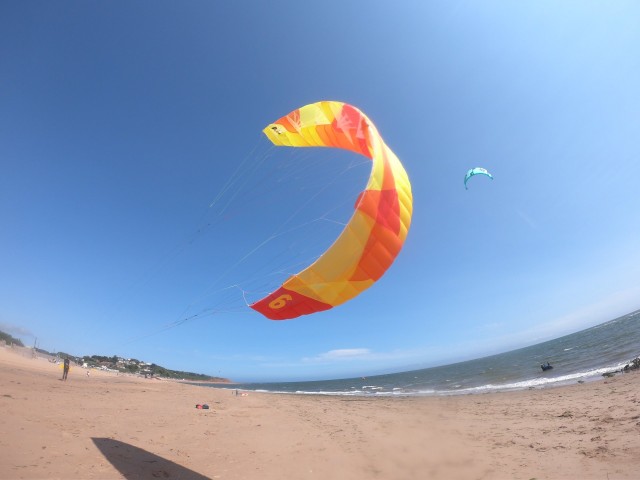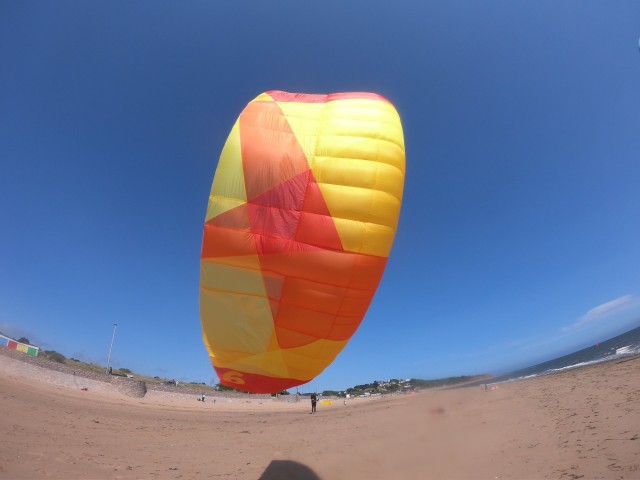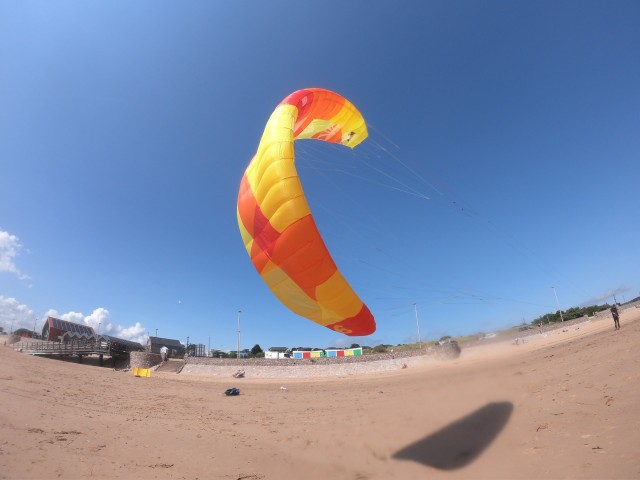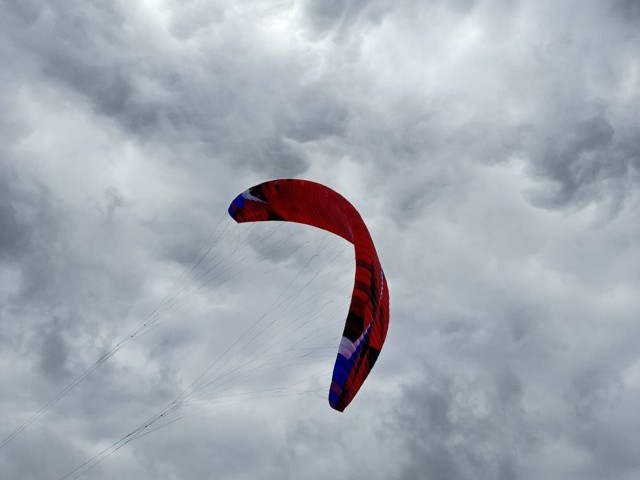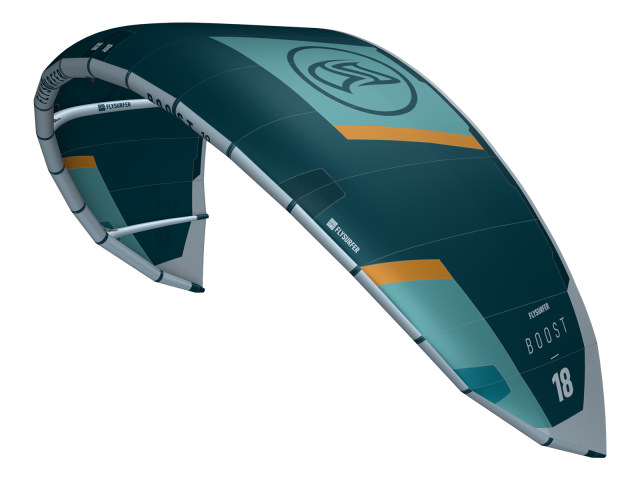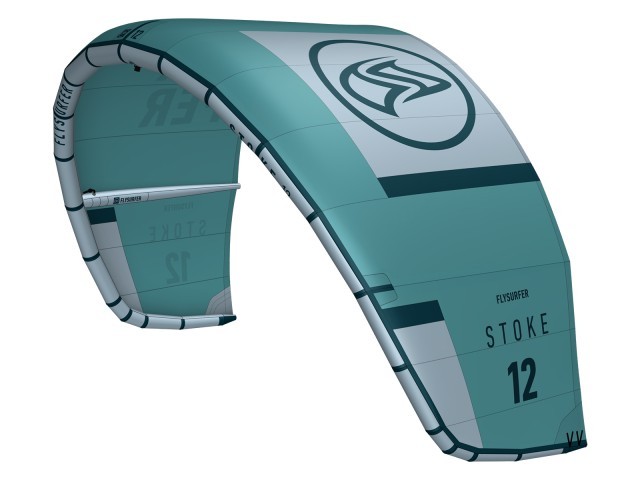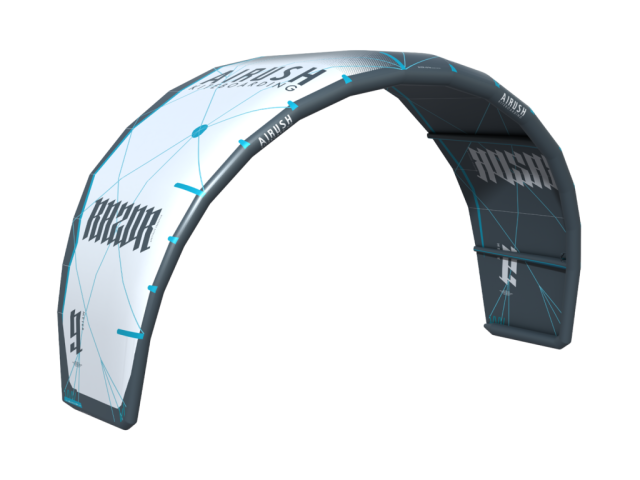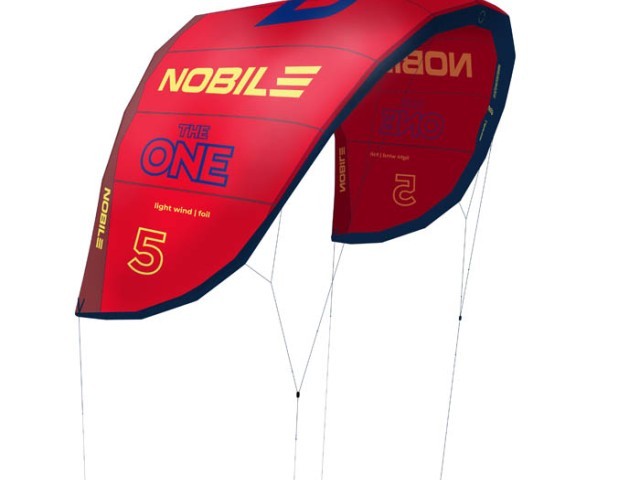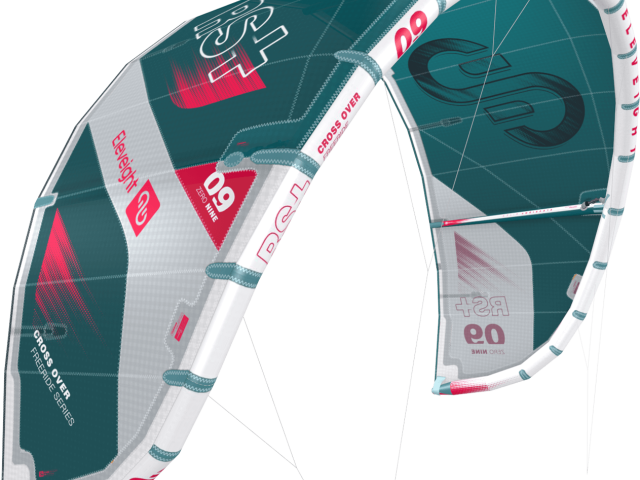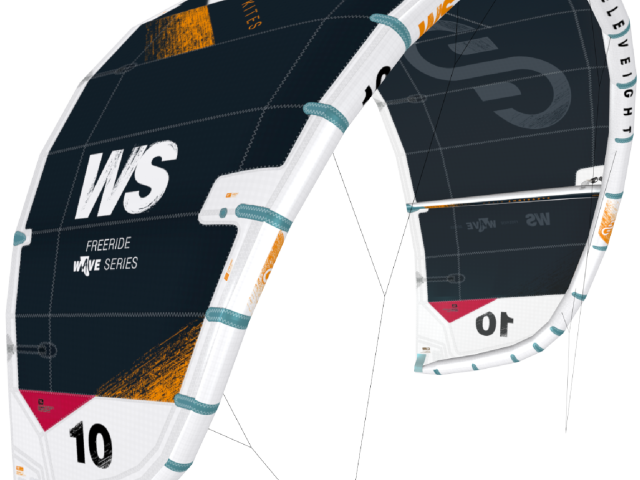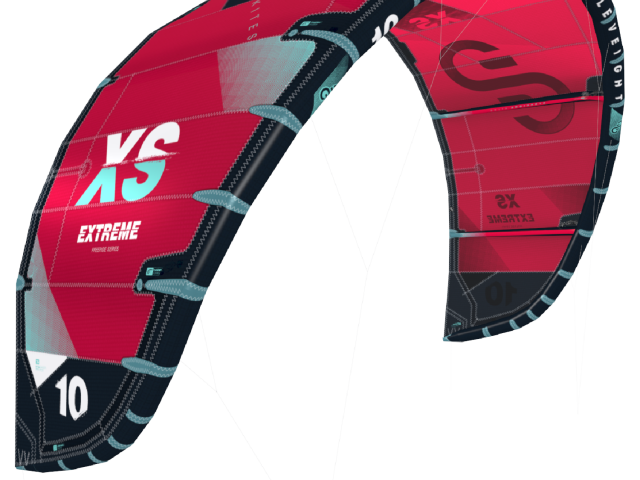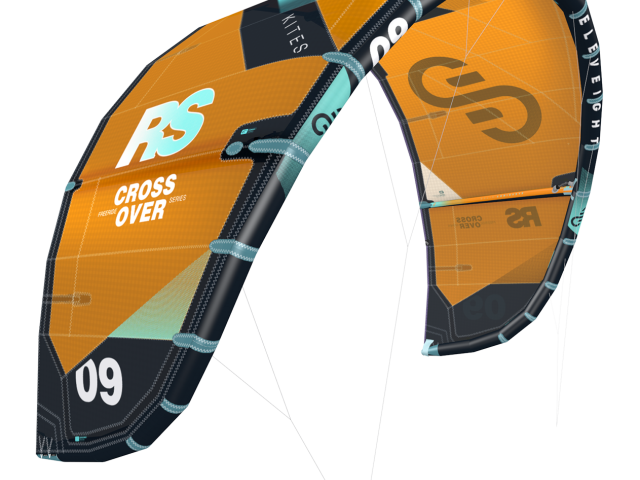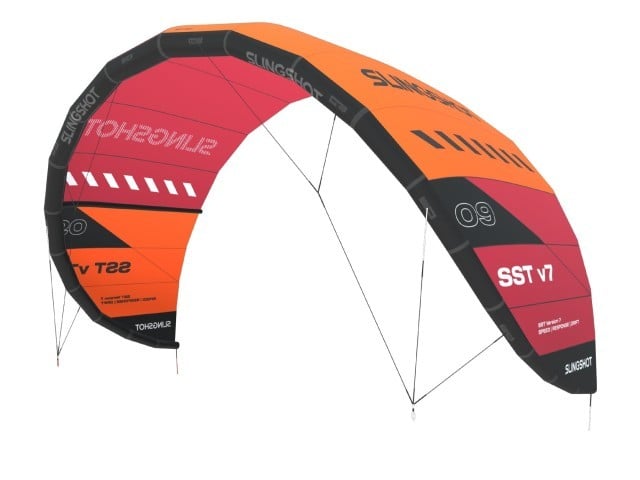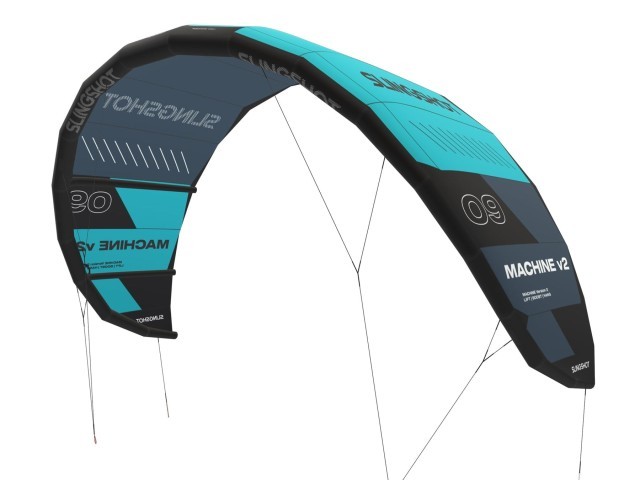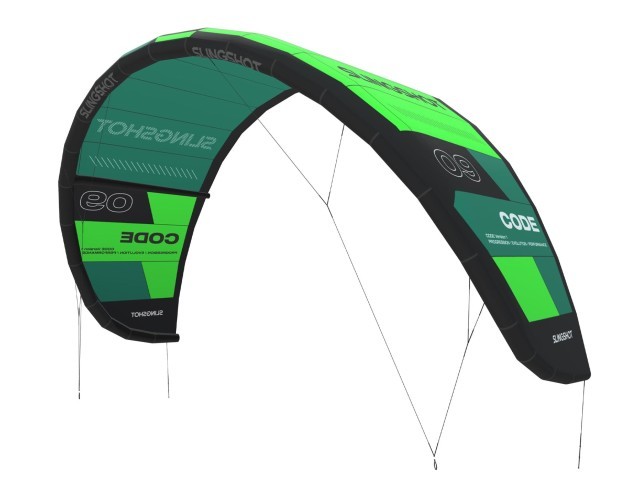At A Glance
The Airwave Alma is a new generation of hybrid foil kites and the outcome of the ongoing collaboration between Airwave designer Tom Lolies and multiple kitefoil world champion Maxime Nocher. Its design is radically different from what we're used to seeing on the water. It is a super lightweight hybrid foil kite (only the leading edge half of the kite has ram air inflated cells, while the trailing edge half is a single skin of bridle supported material). Where the Alma differs from the few competitor hybrid foil kites on the market is the inclusion of five closed cell inflatable struts, which are full chord length and distributed across the arc of the kite.
The natural material savings of the hybrid foil design, in combination with the super simple bridle arrangement, result in a very lightweight product. I've used plenty of traction kites in my days of teaching kitesurfing lessons, but never have I gotten a kite out of the bag to go riding on the water that has weighed 1.18 kg!
Thanks to the minimalistic bridle configuration, there wasn't an excessive quantity of bridle line, so rigging the Alma was painless. The cells inflated quickly once the Alma was in the air, given the reduced volume to fill, and it sat ultra-stable and ready to go.
Sizes: 4m, 6m, 8m, 10m, 12m
In The Air
The Alma makes it clear from the first dive that it is fast through the sky and fast to turn. In my opinion, the characteristics of its power generation for board starts are a near 50/50 blend of a traditional foil kite and LEI. Unlike a traditional foil kite, its turns are arcing from the moment you initiate them, generating forward speed and power quickly, allowing you to just dive the kite from 12 and work the kite dynamically to get going (not too dissimilar to an LEI). If you needed a bit of extra power, it did still benefit from a more traditional foil kite start, but it wasn't regularly required. It is also worth noting that the Alma is far more forgiving of constant heavy backline pressure than many foil kites (keeping the bar in for long periods, even while turning). This is an ideal characteristic to ensure that the Alma will be safe in the hands of pilots with lots of LEI flying experience who are used to keeping the bar in for long periods to generate power. This same flying input will often stall foil kites that don't have adequate riding speed yet, but not the Alma.
The Alma has a dynamic profile. Not only does the bar throw change the angle of attack of the kite, but the bridle arrangement also allows the kite's airfoil profile to change too. With the bar in, the angle of attack is increased, and the profile has significant positive camber to produce maximum lift. This will also produce a little more drag and slow the kite down slightly. With the bar out, the kite has a reflex profile. These are associated with reduced lift and increased stability thanks to a near to neutral lifting moment. What all this means is huge amounts of depower from the bar throw, which is still available even when you are riding at high speeds.
The Alma is fast through the wind window and also fast on the water when you push your foil. How the Alma naturally positions itself in the wind window and its turning characteristics are quite unique. The Alma is extremely stable in a number of ways. In the more traditional sense, the kite doesn't move forward and back too much, the power remains steady, and there is continuous line tension. What's unique is the fact that, even when placed well away from the 12 position, it doesn't immediately start falling towards the ground when steering input is removed or the bar is all the way out - it just seems to stay where it is. It took a bit of getting used to at first, and when you do, you realise how much more you can forget about the kite in critical situations because of this.
The drift available is the Alma's party piece. My testing sessions included a lot of riding downwind on small to medium bumps as well as flat water experimentation with long downwind gybes to try and leave the Alma with zero line tension. 90% of the time, the Alma maintained its shape and fell back with you enough to remain perfectly flyable (it doesn't take much line tension when the whole kite weighs the same as a bag of sugar!). Even when you really went for it, and your lines were drooping down to the water, it might not have looked pretty while it was falling back, but when the lines did re-engage, the transition was smooth, and off you went. My confidence in the kite increased more and more as time went on, and I found myself concentrating more and more on the board/foil and wave, doing what I wanted and worrying about the kite later.
My 'pratting about' did inevitably lead to a couple of accidental crashes, but both times I stayed up on foil long enough to relaunch the kite before I even touched down. In the spirit of good testing, I purposefully crashed the kite in a number of ways to test the relaunch further. When the kite comes down close to the edge of the window, the relaunch really is automatic. It folds in half as it hits the water, then the breeze catches it and blows it back and open, and as it does, it takes off. It is genuinely automatic. The kite gets itself into the air. With the kite directly downwind, the foil kite characteristics paid off as you could pull one line, and that side back stalls, making the kite pivot on one wing tip. You hold the steering line until the kite faces upward, and off you go. There were no signs of bridles getting in the way throughout, and in the sort of wind I'd be riding a 6m in, I don't think I'd ever have issues relaunching unless I binned it in some crashing waves.
As a style of kite unfamiliar to me, I took the Alma out on a number of occasions and never felt remotely close to reaching the top end despite riding in the low 20s. The 6m is something you could still be foiling with in some pretty strong breezes.
Overall
With freeride and wave kitefoiling being a bit of a niche within our sports, there are few examples of kites that are truly developed for and dedicated to foiling (outside of the racing scene, of course!). The Airwave Alma, however, was built from the ground up to deliver all of the desirable characteristics for freeride/wave kitefoiling. Thankfully, not only does the Alma deliver in that regard, but it does so without requiring an absolute wizard of a pilot! It's fast through the sky, playful, has some crazy drift abilities, and doesn't punish you if you get a bit carried away and put it in the drink. If you're an avid kitefoiler, what more could you ask for?
Videos
This review was in Issue 101 of IKSURFMAG.
For more information visit Airwave KiteboardingRelated
By Liam Proctor


